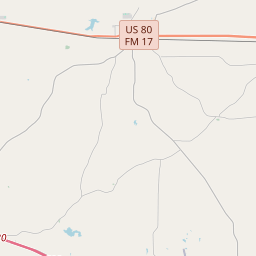Harry W. Meredith







Kentucky native Harry Meredith (1871-1962) attended business college in Illinois and was owner-operator of a brick plant in his hometown of Leitchfield before moving to Mineola, Texas, with his wife, Mary Henri Hunter, by 1907. Meredith entered the banking business in 1908, when he became associated with Mineola State Bank. He served as its president until the financial institution merged with First National Bank in 1932, at which time he became a director and served as chairman of the board for the remainder of his life. During the early 1920s, the Merediths built a home at this site and Harry served as the city's mayor (1920-1922). After his first wife's death in 1932, Meredith married Daisy Warren Nelson (d. 1954) in 1943. Harry Meredith's legacy of philanthropy began in the 1940s, when he gave money to build two dormitories at the Methodist Children's Home in Waco. After his third wife, Jennie Burge Hurdle, died in 1958, Harry organized the Meredith Foundation to fund a variety of civic projects in Mineola for the use and enjoyment of its citizens. Over the years, the Meredith Foundation has helped to build and operate the public library and the civic center. Funds have also been used for the benefit of Mineola's youth, the arts and churches, among other charitable causes. Harry Meredith died in 1962 and is buried in the city cemetery. His significant impact on the city's life, however, continues through the work of the foundation. (2001)
As one of the most visible programs of the Texas Historical Commission (THC), historical markers commemorate diverse topics in Texas history, including: the history and architecture of houses, commercial and public buildings, religious congregations, and military sites; events that changed the course of local and state history; and individuals who have made lasting contributions to the state, community organizations, and businesses.
The discovery of oil in 1901 near Beaumont, Texas, sparked an oil boom that transformed the state's economy and led to the rise of the modern petroleum industry.
In the early 1800s, the region attracted settlers from the United States who were drawn to the lush forests and abundant resources. The first permanent European-American settlement was established in 1846, and it was named Quitman after John A. Quitman, a prominent politician of that time.
During the Civil War, Wood County played a significant role in supporting the Confederacy. Many residents enlisted in the Confederate Army, and the area became a center for military recruitment and training. After the war, the county suffered economically, but with the introduction of the railroad in the late 19th century, the economy began to recover.
Wood County's economy primarily relied on agriculture, with the growth of cotton, corn, and timber industries. The establishment of sawmills and the development of the timber industry brought prosperity to the area. In the early 20th century, the discovery of oil and gas reserves further fueled the county's economic development.
Today, Wood County continues to be an important agricultural and industrial center in Texas. The county's history is evident in its charming small towns, historic sites, and natural beauty. The strong sense of community and appreciation for the region's heritage are still evident today, making Wood County a vibrant and inviting place to visit or live.
Wood County Timeline
This timeline provides a glimpse into the major events and milestones that have shaped the history of Wood County, Texas.
- 1850: Wood County is established by the Texas legislature.
- 1852: The first courthouse in Wood County is built in Quitman.
- 1860: The population of Wood County reaches 4,867.
- 1875: The railroad reaches Wood County, boosting economic growth.
- 1895: The county seat is moved from Quitman to Mineola.
- 1920: The population of Wood County peaks at 19,109.
- 1930: The Great Depression hits Wood County, causing economic hardship.
- 1958: Lake Holbrook is completed, providing a recreational area for residents.
- 1970: Wood County's population decreases to 12,230.
- 1983: Holly Lake Ranch, a gated residential community, is established in Wood County.
- 2000: The population of Wood County surpasses 37,000.
- 2019: Wood County experiences steady growth and continues to be a thriving community.